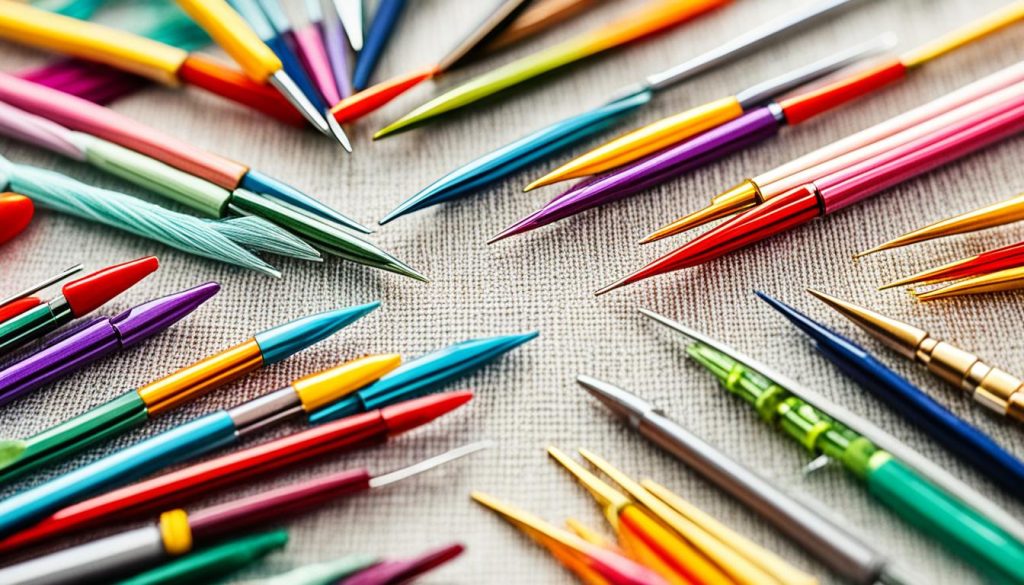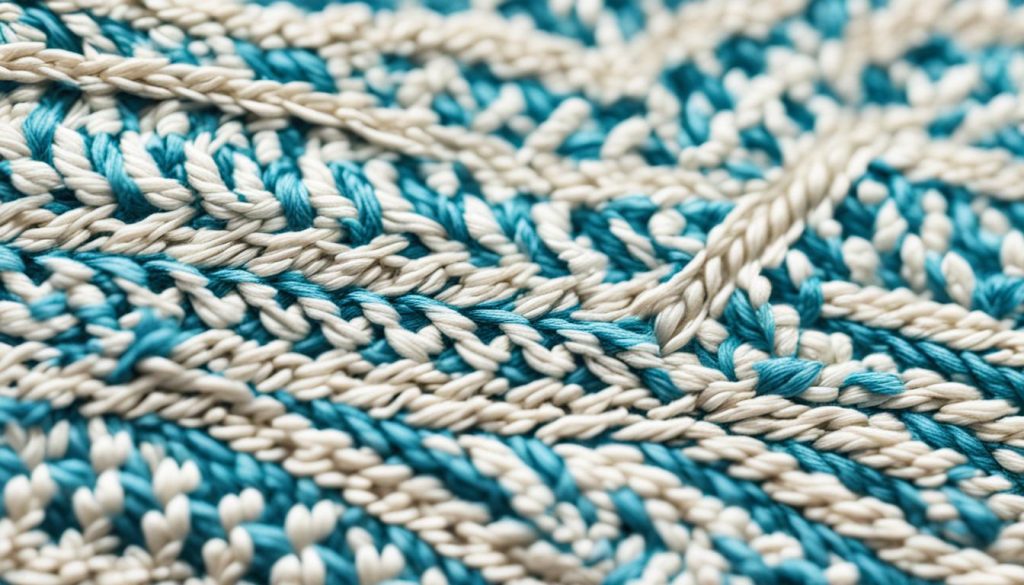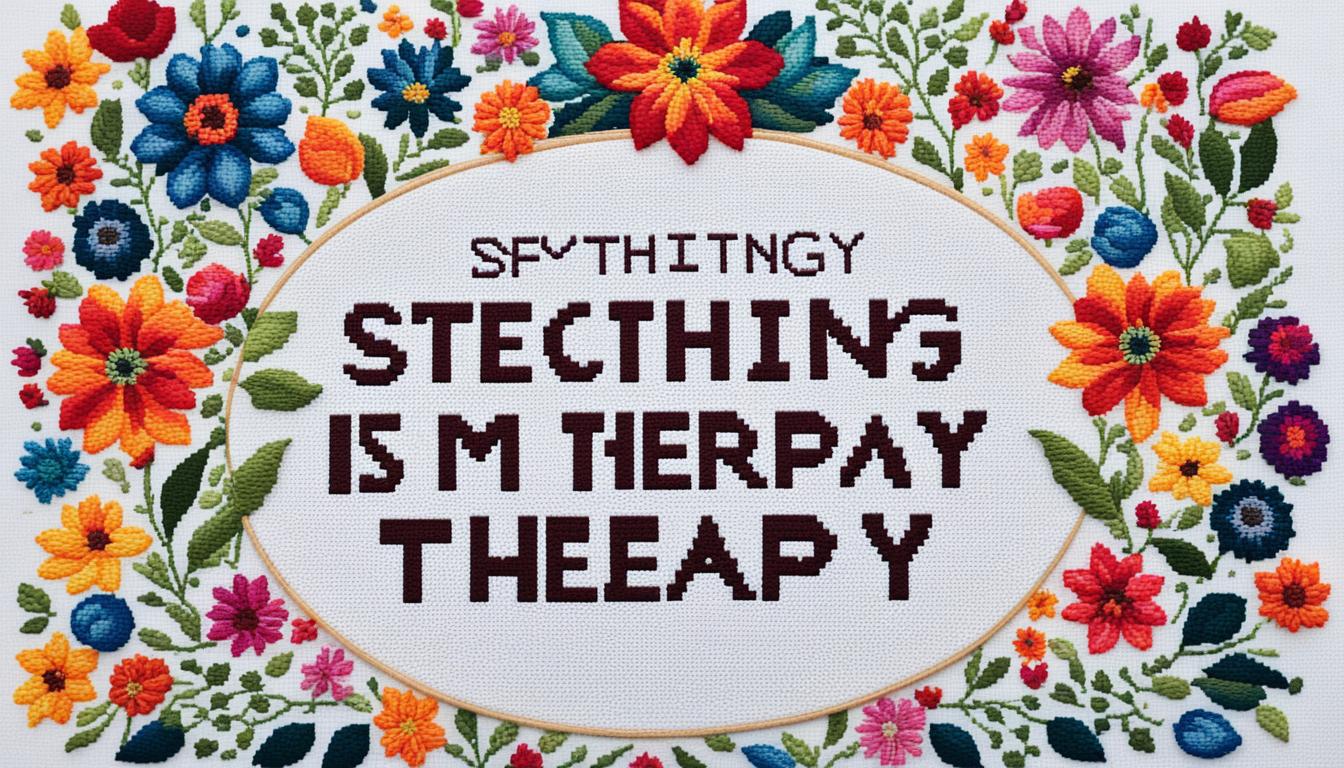Welcome to the world of cross-stitching, where you can find peace and create beautiful art. This guide is for both new and experienced crafters. It offers everything you need to start or improve your cross stitch skills. This hobby combines relaxation with learning new skills, leading to stunning results.
By the end of this guide, you’ll know a lot about cross stitch supplies and techniques. You’ll learn how to pick the right needles and threads and understand various fabrics. It covers beginner cross stitch to advanced patterns, so you can find something that matches your level and interests.
This guide explains the differences between embroidery and tapestry needles and teaches key cross stitch techniques. It ensures you know everything to start enjoying this rewarding hobby.
Key Takeaways:
- Tapestry needles range in sizes from 13 to 28; sizes 22 to 28 are most commonly used for cross stitch.
- Embroidery thread skeins are usually over eight yards long and contain six strands per skein.
- Generally, you will use two strands for cross stitching and one for backstitching.
- Evenweave and linen fabrics often have a 1:1 thread ratio, allowing for up to 32 stitches per inch.
- Aida fabric has thread counts ranging from 6 to 20 stitches per inch.
Choosing the Right Needles and Threads
Choosing the right needles and threads for cross stitching is key. The type of needle and thread you pick can greatly affect your final piece’s quality. Making smart choices leads to smooth stitching and a beautiful finish.
Types of Needles
Picking the right needle is crucial for cross stitch projects. Here are the main types you’ll find:
- Tapestry needles – They have blunt ends and big eyes. Sizes range from 13 to 28. Size 24 is great for 14-16 count fabrics, and size 26 for higher counts like 18 or 32.
- Petite needles – These are shorter with a bigger eye, perfect for using all your threads.
- Sharp needles – Best for fractional stitches on Aida or backstitch.
- Gold-plated needles – Smoother than nickel, great for those allergic to nickel, and adds a luxury feel.
- Platinum-plated needles – Not much better than standard nickel but feels premium.
- Twin-pointed needles – Made for stitching up and down without turning the needle.
- Easy guide/ball tip needles – Have a small ball on the end to make stitching easy.
Varieties of Threads
Threads are as important and varied as needles. Brands like DMC and Anchor threads offer many colors, making your designs pop. Whether you pick variegated threads for color changes or metallic threads for shine, the right choice can make your project stand out. Hand-dyed fabric adds a personal touch, offering unique colors not found in standard threads.
Embroidery vs. Tapestry Needles
Both needle types are used in cross stitching but for different tasks. Tapestry needles are blunt, reducing fabric thread piercing risk. Embroidery needles have sharp ends, ideal for detailed stitching on even weaves. Knowing the difference helps pick the best needle for your project.

- 11 count Aida: size 22 needle
- 14 count Aida/28 count linen/evenweave: size 24 needle
- 16 count Aida/32 count linen/evenweave: size 26 needle
- 18 count Aida: size 28 needle
Choosing the right needle and thread improves stitching speed and consistency. It also ensures a neat back side and prevents thread damage. Using quality threads from DMC and Anchor, and unique options like hand-dyed fabric, makes your finished piece look professional.
Essential Cross Stitch Supplies
Starting with cross stitching needs the right tools for comfort and precision. This section covers the core supplies you’ll need for a successful project.
Fabric Types and Choices
Choosing the right cross stitch fabric is key. Aida cloth, especially the 14-count type, is great for beginners. It has 14 cross stitches per inch, making it easy to manage for newbies. Zweigart fabric is also a top choice for its quality and durability.
Both Aida and Zweigart come in many colors and counts. This gives you flexibility for different designs.

Evenweave and linen fabrics are also used but better for those with more experience. Each fabric type changes the look and feel of your cross stitch project.
Hoops and Frames
Cross stitch hoops and frames are key for keeping your fabric tight and easy to work with. Wooden hoops are popular among beginners for their light weight and framing ability. They come in various sizes, made from wood or plastic, and everyone has their favorite.
For bigger projects, cross stitch frames offer a stable surface. Using the right hoops and frames helps with stitching precision and comfort.
Light and Magnification Tools
Working on detailed designs or dark fabrics can be hard on your eyes. Lighted magnifiers are a must for better visibility and less eye strain. They’re great for intricate patterns or finer fabrics like 18-count Aida or higher.
Good lighting and magnification tools make your stitches precise and your experience enjoyable.
Understanding Cross Stitch Techniques
Learning different cross stitch techniques is key for any crafter wanting to improve their skills. This part will cover the basics of making cross stitches and using the back stitch. These skills are vital for creating beautiful designs.

Creating Cross Stitches
First, pick the right fabric and tools for cross stitching. Aida and linen are top choices, even if they can fray. Beginners might want to use an embroidery hoop to keep the fabric tight. You’ll use embroidery floss, which is six strands twisted together, but most patterns only need one or two strands.
A good tip is to cut the embroidery floss to about 18 inches long. This helps prevent knots. When you finish a row, pass the needle under at least three stitches to keep it secure. Don’t jump too far across the fabric to avoid thread showing on the front.
Let your needle and thread hang loose to stop twisting. Buying all your supplies, like floss, at the start helps keep the thread colors consistent. Paying attention to these details is key to mastering cross stitch.
Using Back Stitch
Back stitch is great for adding depth and detail to your work. It’s often used to outline and highlight parts of a design. Start with basic back stitches before trying harder ones, according to many tutorials.
Try to keep your back stitches evenly spaced and the tension consistent. Use one strand of floss for details and two strands for outlines. A good back stitch can turn a simple pattern into something amazing.
Adding back stitch to your skills will make your cross stitch projects look better. It’s a great way to improve your stitching and offers a fun challenge for all skill levels.
By focusing on these basic techniques and tips, you can make your cross stitch projects look amazing. Whether you’re following tutorials or stitching on your own, mastering these skills will make your experience more rewarding.
Exploring Cross Stitch Patterns
The world of cross stitch patterns is vast, offering something for everyone. Whether you’re just starting or want to improve your skills, this section will guide you. It covers a range of cross stitch designs for different levels of expertise and interests.
Beginner Cross Stitch Patterns
If you’re new to cross stitching, there are many beginner patterns to help you start. You can find free patterns easily, making it affordable to begin. For beginners, 14-count Aida fabric is best, making your stitches neat and uniform.
Etsy and Pinterest are great places to find patterns and finished pieces for inspiration. With over 1,000 free patterns to choose from, you’ll find simple shapes, small animals, and uplifting quotes. Starter packs often include kits and Six-Strand Embroidery Floss, giving you everything you need.
Advanced Cross Stitch Designs
For those wanting to challenge themselves, advanced cross stitch designs are perfect. These patterns feature intricate landscapes, detailed portraits, and complex scenes. The DMC Craft Studio offers tutorials and stitch diagrams to help you improve.
Monthly newsletters with tips and offers keep you updated on new patterns and tools. Sites like Mr X Stitch and DeviantArt showcase modern artwork to inspire your projects.
Crafters get inspiration from various places, like museums and art fairs. Travel, movies, and local events can also spark creativity. Competitions are a great way to improve your skills and find new ideas. With many cross stitch charts available, there’s always something new to try.
